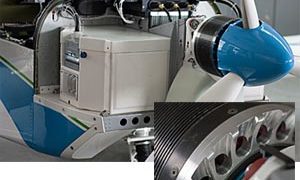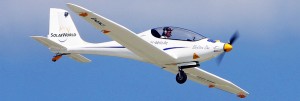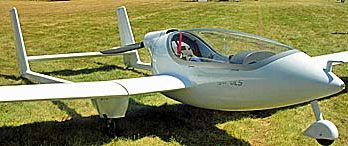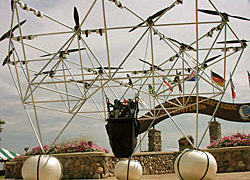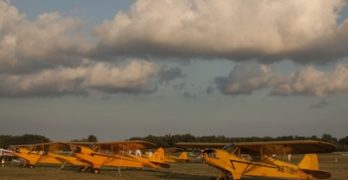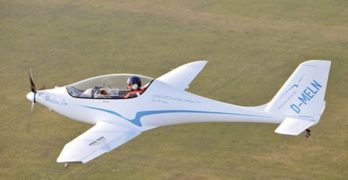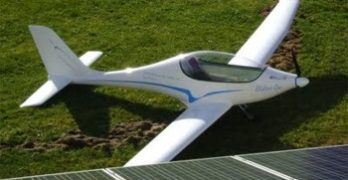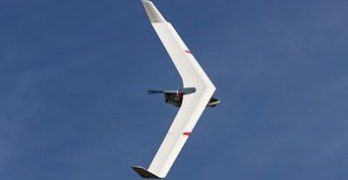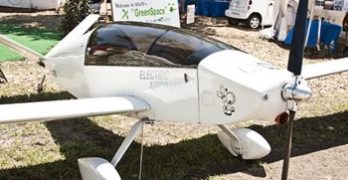Several Florida airports have been active during the recession in their efforts to pull new clients. We reported earlier such projects but went to visit one of these over the last weekend. Renegade Light Sport Aircraft had an open house staged in their gargantuan 71,000 square foot hangar and offices on the Fort Pierce airport. Perhaps 200 attended and enjoyed proprietor Doc’ Bailey’s expertise with the barbecue grill. Certainly the facility is mighty impressive as a base of operations. Besides vast square footage, climate controlled work areas are available as is a paint booth and drying kiln. Renegade will be some time filling this large space but Doc’ reported a very special price offer with owner financing that compelled him to move from rented facilities in Missouri. Meanwhile we reviewed projects for the Lil’ Rascal carbon fiber version of the Pitts S1 to plans for the first all-American-built Falcon.
Search Results for : Randall Fishman
Not finding exactly what you expected? Try our advanced search option.
Select a manufacturer to go straight to all our content about that manufacturer.
Select an aircraft model to go straight to all our content about that model.
Electric Avenue Widens; Evektor Motorplane Flies
An “engine” is a machine distinguished from an electric, spring-driven, or hydraulic motor by its use of a fuel, by which most mean gasoline or diesel fuel. An electric powerplant is often referred to as a motor to make it distinct although “motor” is defined as a device that converts any form of energy into mechanical output, which would include engines.
Without fretting over the definition, Evektor flew their new “motorplane” (my word) recently and this post presents our view of this accomplishment. We’ve reported several electric aircraft projects, for example, Yuneec’s Spyder and their larger e430 mentioned in my full-length article on electric aircraft. We’ve also covered Randall Fishman’s ULS (which will be on display in the LSA Mall at Sun ‘n Fun) and several others. To read all our 37 articles of coverage, type “electric aircraft” in the Full-text Search box on our Search page.
Electric Airplane in 48 hours!
With all the bright minds drilling down for electric flight gold worldwide these days, including extensive research into battery storage technology and electric motor development, you’d think it’s only a matter of time before a major aircraft company comes out with an off-the-shelf aircraft to officially “launch” electric flight for the masses.
Yuneec, a Chinese company, did just that a few years back with its graceful E430. Several other companies debuted exciting electric prototypes yet since then, little has manifested under the pilot’s Christmas tree beyond a $200,000-plus electric-sustained sailplane (the elegant Lange Aviation Antares 20E), a composite motorgliderish single-seater that goes for around $140,000 (PC Aero Elektra One) and a two-seat, side-by-side electric powered sailplane (Pipistrel Taurus Electro G2, also available gas powered.)
Of course, we can’t overlook pioneer Randall Fishman‘s efforts.
Electric! Gorgeous! Freedom! …4th Generation ULS
Randall Fishman virtually invented the electric aircraft. That’s a rather big statement yet I stand behind it. Randall first showed a functional electric trike at Oshkosh 2007. He’s been on a tear ever since and his ULS is his present state-of-the-art, his fourth generation of electric aircraft design.
*** I use three words to describe ULS deliberately. It’s electric. That’s obvious but singular. Fishman’s Electric Aircraft Corporation is presently selling electric powered aircraft. You can also buy an electric eSpyder from Yuneec or an eGull from Earthstar but after that, mostly what you hear about electric aircraft are developments… fascinating but just developments. Electric Aircraft Corporation is ready today.
*** ULS is gorgeous. You can see that for yourself and I have to presume you agree because it is simply beautiful in its sweeping lines, slippery smoothness, and overall elegance. It wowed visitors to Oshkosh 2012 and it’ll do that at any airport I submit.
LSA & Lightplane Highlights at Oshkosh 2012
In the near future, we’ll present fuller stories of some of the following short bits from Oshkosh 2012. With UltralightMews, we shot videos on most of the following, too, so watch for those as we can post them. Enjoy!
CESSNA & PRIMARY CATEGORY Early on in the week, Cessna announced they would transition their LSA Skycatcher to Primary Aircraft status. That requires a Type Certificate and FAA production approval but the Wichita giant can do this handily even if will add some cost. More on in a later article. However, here’s a way Cessna can recapture some 80 orders from Europeans cancelled earlier this year. On a more fun note, it was a pleasure to meet all nine of their youthful ambassadors that worked in the Discover Flying Challenge program. We shot a video featuring each participant and we’ll post that as soon as possible. (In the near future, we’ll feature a brief review of Primary Category versus LSA.)
AHOY, AKOYA!
Oshkosh Refreshed
Just put in my first day at the show, only doing 3 days this year, plus a layover day to pick up any after-show-convenient flight reports. *** Todd Ellefson, Will Escutia and Daniel Perez and the new owners of Quicksilver, the venerable ultralight company, announced it will pursue ASTM conformation certification for two of its time-proven models, the GT-500 and Sport 2S, as S-LSA and E-LSA. Quicksilver has sold more than 15,000 aircraft over the years, and has one of the most beautiful, slam-dunk, bolt-together kits you’ve ever seen. I built several in the early 1980′s: absolutely impeccable, easy-build kits. *** The FAA verification process has already begun toward offering models as Experimentally Amateur Built kits as well, which will allow two-seat former Ultralight category Quicksilver models that were phased out when the Light Sport Aircraft category came into being to have a home again. *** Although a good percent of the many, many Piper Cubs have gone home, there is still a distinct marigold presence of dozens of the classic bird that brought civilian flying almost singlehandedly to the nation back in the ’30s and ’40s.
Electric-Powered Light Aircraft
Flying with Juice
As an airplane approaches, a whirring sound accompanied by a
barely discernible whine and a mild propeller buzz exhibit a
Doppler effect as the plane passes overhead. What is that curious noise?
We are intimately attuned to internal combustion engine sounds –
some experts claim they can identify the brand and size of an engine
simply by listening to it run. We’re less aware of electric motor noises
because we quickly tune them out. Electric motors run everywhere in
our lives – in our refrigerators, our computers, in our ceiling fans, and
numerous other appliances. Most motors – it’s incorrect to call them an
“engine” – are exceptionally quiet, and that’s a good thing.
One wonders if relatively quiet electric motors on aircraft will invade
our piston-powered world, especially given noise sensitivity at many airports.
Some say, “We’re about to see if electric works.” I say, “We’re seeing
it right now!”
Two years ago, I wrote about ultralights – literally Part 103-compliant
ultralights – operating remarkably well on electric power.1 In the ensuing
months, more projects have been announced.
Getting a Charge
Well, Thomas, you’ve done it again: gotten me to blather on so long with your as-always thoughtful and knowledgeable comments that I exceeded the comment buffer so have to palaver on here in another post. *** Well, that’s why they call it a weBlog I guess: it’s a place to hang our thoughts out to dry. *** So what’s below is a response to your comment from yesterday’s post, with a couple more pix thrown in to thump the eye candy factor. *** I think we can’t overlook the market factor here. Just as car manufacturers know where the buyers are, it could be what we’re seeing with these projects aiming toward higher/faster/more payload electric are manufacturers figuring that they’re since they’re going to sell more of the expensive, travel-capable airplanes than sailplanes and motorgliders anyway, why concentrate time and resources on a transient, historically tiny share of the market? Leapfrog to the future, expect the tech to come along as needed.
Electric Flight: More Thoughts
Yesterday a reader commented on my electric flight post, specifically about the LZ FES, a pretty sexy add-on that just won the Lindbergh LEAP prize for best new electric propulsion system. He wondered whether electric flight for now required light weight motorgliders or whether heavier, 15M plus sailplanes/motorgliders would be workable for electric power. *** My answer began to get too lengthy to stick in comments so I’m posting it here, and thanks Thomas for your enthusiasm. *** I talked over this very subject this week with Randall Fishman, the award-winning electric flight pioneer. His take on where we’re at right now is in my Profiles in Vision column, coming in the July issue of P&P. *** Randall’s whole trip is to get people up in the air with electric power right now, and not for 150,000 clams either. To summarize his own one-man research and development plan, it’s all about lightweight motorgliders.
Electric Motorglider For Sale
Catching up on some particulars with Randall Fishman of ElectraFlyer after our chat at Sun n Fun, he told me he’s selling his prototype C model for $49,000.
Here’s what he had to say about it and other aspects of his electric powered aircraft pioneering efforts: “We have sold trikes since 2007. Most of our sales are propulsion kits, batteries and chargers for people either building something new or converting to electric. The first two of the new motors are in my shop now and we will be mounting them for testing.
“The C is a one off conversion of a plane I already owned (a Moni kit motorglider). I want to sell it now to help finance the new projects. It is really the first successful electric airplane other than some exotic million dollar science projects such as the solar planes. I hope there is a collector out there.



